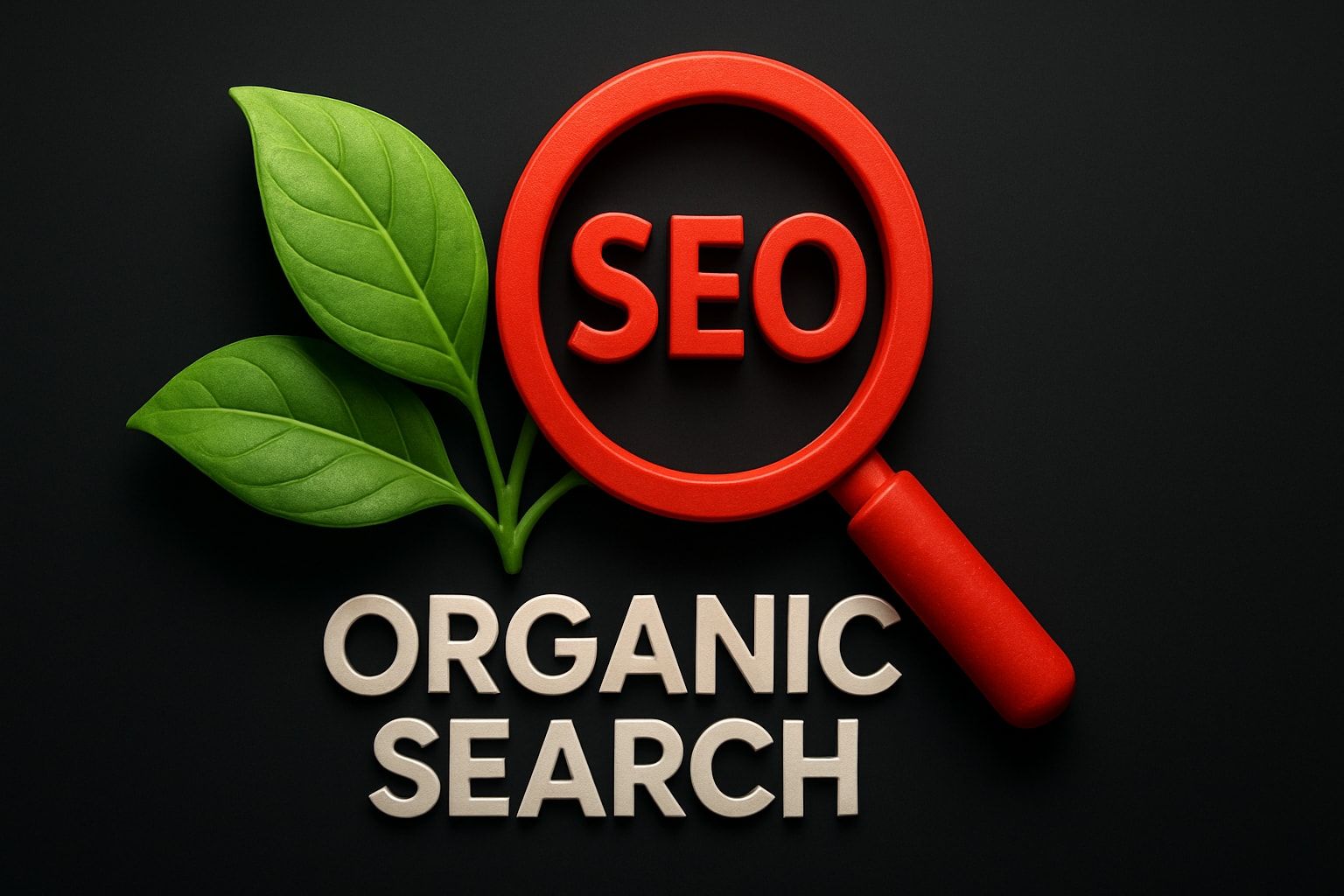How Much Do Google Ads Cost? Find Out & Save Money
How much do Google Ads cost?
So, how much do you need to budget for Google Ads? It’s the million-pound question but the answer isn’t a single number. For a small UK business running a local campaign, you might spend £10–£20 per day . For a national company in a competitive market, that figure could easily jump to over £10,000 per month .
The truth is, there's no fixed price list. Think of it less like buying a product and more like fuelling a machine—you decide how much you want to put in based on how far and fast you want to go.
Your Quick Guide to UK Google Ads Costs
Many business owners get stuck on the question, "How much does it cost?" hoping for a straightforward answer. But Google Ads is a custom tool, not an off-the-shelf product. Your budget is entirely up to you, shaped by your business goals, your industry and how much you’re willing to invest to get ahead of the competition.
The cost isn't one flat fee; it's a mix of different metrics. The most important one to get your head around is the Cost Per Click (CPC) . This is simply what you pay every time someone clicks on your ad. For most search campaigns, this is the bedrock of your spending.
Average UK Cost Benchmarks
To give you a rough idea, let's look at some averages. A deep dive into thousands of campaigns revealed that the average CPC in the UK hovers around £1.30 . That means for every click, you’re paying a little over a quid. But remember, this is just an average—it can swing dramatically from one industry to another.
What’s even more telling is the average cost per conversion. The same research shows it’s about £26 to get a solid lead or sale. This is the number that really matters because it tells you what you’re paying for actual results, not just clicks.
To get started, here are the key metrics you’ll want to watch:
- Cost Per Click (CPC): The price you pay for one person to click on your ad.
- Cost Per Mille (CPM): What it costs for your ad to be seen one thousand times.
- Cost Per Conversion: The total spend it takes to achieve a valuable action, like a form submission or a completed purchase.
Average Google Ads Cost Benchmarks for UK Businesses
To make things clearer, here’s a quick summary of the average costs a UK business can expect to see across different Google Ads metrics. Think of this as a starting point to gauge your own performance.
| Metric | Average Cost (GBP) | What It Measures |
|---|---|---|
| Cost Per Click (CPC) | £1.30 | The price of a single click on your advert. |
| Cost Per Mille (CPM) | £0.60 | The cost for one thousand ad impressions (views). |
| Cost Per Conversion | £26.00 | The total cost to get a sale or a lead. |
These benchmarks give you a solid footing for budget planning. Knowing what’s ‘normal’ helps you set realistic expectations and spot opportunities for improvement in your own campaigns.
For a deeper look into making your budget work harder, there are some great guides on how to optimize Google Ads and understand their real cost. This knowledge is crucial for comparing your digital marketing spend, just like it's useful to understand your options for social media management pricing in the UK.
In the next sections, we’ll break down exactly what pushes these numbers up or down.
How the Google Ads Auction Really Works
To get your head around Google Ads costs, you first need to understand the system that actually sets the prices. It’s not a simple case of the highest bidder automatically winning the top spot.
Instead, picture a lightning-fast, silent auction that happens billions of times a day. In this auction, Google rewards quality just as much as a high bid. This whole process is the engine that drives your ad pricing.
Every single time someone types a search into Google, an auction kicks off. Google instantly scans all the advertisers bidding on keywords related to that search, then decides which ads (if any) will show up and in what order. This ranking isn’t just about who’s willing to pay the most; it’s all decided by a metric called Ad Rank .
Unpacking Your Ad Rank
Your Ad Rank is the score Google gives your ad to determine its position on the search results page. It's calculated using two main ingredients: your maximum bid and your Quality Score.
The formula is simple but incredibly powerful.
Ad Rank = Your Maximum Bid × Your Quality Score
This means an advertiser with a fantastic Quality Score can actually beat a competitor with a much bigger budget but a poor score. It's how Google’s system is designed – it favours ads that give users a great experience, not just the ones with the deepest pockets. This is exactly why a small business can go toe-to-toe with industry giants.
The infographic below helps visualise the key cost factors and performance metrics that feed into this system.

As you can see, things like click-through rate and relevance have a direct impact on your campaign costs and overall success.
Why Quality Score Is Your Secret Weapon
So, what exactly is this all-important Quality Score ? Think of it as Google’s rating, from 1 to 10 , for the quality and relevance of your keywords and ads. It's determined by several factors and getting to grips with them is fundamental to understanding search engine marketing.
Here’s what makes up your score:
- Expected Click-Through Rate (CTR): How likely is it that people will click your ad when it appears? Google looks at historical performance to predict this.
- Ad Relevance: Does your ad copy actually match what the user searched for? A specific, relevant ad will always score higher than a generic one.
- Landing Page Experience: When someone clicks your ad, does the landing page deliver on the promise? It needs to be relevant, easy to navigate and offer a genuinely good user experience.
A high Quality Score is your signal to Google that your ad is a great match for what the searcher wants. The reward? You don't just get better ad positions; you also end up paying less for each click.
This is probably the most crucial takeaway for managing your budget: improving your Quality Score is one of the most effective ways to lower your Google Ads costs in the long run.
The Key Factors Driving Your Ad Spend
Now that we have a handle on the auction system and Quality Score, we can dig into the specific things that make your Google Ads costs swing up or down. Getting to grips with these is the secret to taking real control of your budget and making your ad spend work smarter, not just harder.

Think of these factors as levers you can pull. A little adjustment here, a small tweak there and you can find that sweet spot between visibility and affordability. It's all about getting the best possible return on your investment.
Industry and Competition
One of the biggest forces shaping your ad spend is your industry. It's a simple fact that some sectors are just more competitive than others and that rivalry directly pushes up the price you’ll pay for a click.
Imagine a London-based law firm bidding on a high-value keyword like "commercial litigation solicitor". They're up against dozens of other firms and since a single new client could be worth tens of thousands of pounds, they’re willing to bid high.
Now, compare that to a local bakery in Devon bidding on "sourdough bread near me". The competition is much lower and so is the potential revenue from one click, which naturally leads to a much cheaper CPC. This difference is stark.
In the UK, for instance, legal services have one of the highest average CPCs on search ads, sitting at around £7.20 . The automotive industry, on the other hand, averages a much lower £1.38 . This pattern holds for the cost per lead, which can hit £116 for legal services but only about £23 for car businesses, reflecting just how fierce the competition is in certain fields. You can find more insights on Google Ads costs across UK industries to see where you stand.
Your Keyword Strategy
The keywords you choose to bid on have an instant and direct impact on your costs. It’s a classic case of supply and demand.
- Broad, High-Volume Keywords: Think about terms like "car insurance". They get searched thousands of times a day, which makes them incredibly competitive and very expensive to bid on.
- Long-Tail, Specific Keywords: Now consider a phrase like "classic car insurance for over 50s". It's far more specific. While the search volume is lower, the user’s intent is crystal clear, which almost always means less competition and a lower CPC.
A smart strategy often involves a healthy mix of both but for smaller businesses, honing in on those long-tail keywords is a powerful way to find affordable traffic that’s ready to convert.
Key Takeaway: Your Quality Score is the most powerful tool you have for saving money. Google rewards ads that give users a great experience with better placements and a lower cost per click. A score of 7/10 can earn you a 15-20% discount on your CPC, whereas a score below 5/10 could see you paying a hefty premium.
Geographic and Time Targeting
Where and when your ads show up can also make a huge difference to your ad spend.
Targeting the entire UK will always be more expensive than focusing on a specific city or region. In the same way, running your ads 24/7 might just be burning cash if your customers are only searching for your services during normal business hours.
This is where ad scheduling and geotargeting come in. By showing your ads only during peak conversion times or in profitable locations, you can concentrate your budget where it will have the most impact. It stops wasted spend in its tracks and boosts your overall return.
Here’s a quick breakdown of how these different factors can either drive up your costs or help you save money.
How Different Factors Affect Your Google Ads Cost
| Factor | Cost-Increasing Choice | Cost-Saving Choice |
|---|---|---|
| Industry | Entering a high-competition field like finance or legal. | Operating in a niche market with less competition. |
| Keywords | Bidding on broad, high-volume keywords (e.g., "shoes"). | Focussing on specific, long-tail keywords (e.g., "men's leather walking shoes size 10"). |
| Quality Score | Neglecting ad relevance and landing page experience (Score 1-4). | Optimising ads and landing pages for a high score (Score 7-10). |
| Geotargeting | Targeting a broad area like an entire country. | Focussing on specific cities, postcodes, or a radius around your business. |
| Ad Scheduling | Running ads 24/7 without performance data. | Showing ads only during peak conversion hours and days. |
| Bidding Strategy | Using manual CPC without experience or a clear goal. | Using automated bidding strategies focussed on conversions or ROAS. |
Ultimately, every choice you make has a knock-on effect on your budget. By understanding these levers, you can build a campaign that is not just visible but genuinely profitable.
Setting a Realistic Google Ads Budget
Figuring out your ad spend can feel like you’re just picking a number out of thin air but it really doesn't have to be that way. A realistic Google Ads budget is less about guesswork and more about creating a clear financial roadmap that actually lines up with your business goals.
There are a few solid ways to land on a sensible starting point. One of the most effective is to simply work backwards from what you’re trying to achieve. This little shift in thinking turns budgeting from an expense into a proper strategic exercise.
Work Backwards From Your Sales Targets
First thing’s first: define your goal. How many sales or leads are you aiming to bring in each month? Once you have that magic number, you can start to calculate the ad spend needed to actually hit it.
Let's say you run a local plumbing service and your target is to land 10 new customers a month purely from your ads. If you already know that, on average, one in every 20 leads converts into a paying customer, then you’ll need 200 leads. If your average cost per lead is around £15 , the maths becomes pretty straightforward.
Formula: (Target Customers ÷ Lead-to-Customer Rate) × Average Cost Per Lead = Monthly Budget
Example: (10 Customers ÷ 0.05) × £15 = £3,000 per month
This kind of calculation gives you a data-driven budget that’s directly tied to your growth. If you want to get even more precise with your financial planning, a dedicated Google Ads Calculator can be an incredibly helpful tool.
Start With a Small Test Budget
If you're brand new to this and don't have any past data to lean on, a small test budget is your best friend. It’s the perfect way to gather the vital information you need before you start committing to a much larger investment.
Kick things off with a modest daily budget, something like £10–£20 . It’s just enough to start collecting valuable performance data without taking a big financial risk. Let your campaigns run for a few weeks but keep a close eye on the key metrics.
- Which keywords are actually driving clicks?
- What’s your average cost per click (CPC)?
- Are you getting any conversions at all?
This initial phase is all about learning. The data you gather will show you what’s working and what’s not, giving you the confidence to scale your budget once you’ve found a profitable formula.
Calculate Your Return on Ad Spend
At the end of the day, your ad spend should be seen as an investment, not just another business cost. The best way to measure its success is by calculating your Return on Ad Spend (ROAS) .
This simple formula tells you exactly how much revenue you're generating for every pound you put into advertising. A positive ROAS means your campaigns are profitable. By tracking this figure, you can make smart decisions about where to increase your budget and where you might need to pull back, making sure your investment keeps delivering solid returns.
Proven Strategies to Reduce Your Google Ads Costs
Knowing how Google Ads works is one thing but actually using that knowledge to bring your costs down is where the real magic happens. Once you have a solid budget in place, it’s time to start optimising.
The good news? Making your ad spend more efficient doesn’t require a massive overhaul. Often, just a few smart tweaks can make all the difference.

Think of this section as a toolkit filled with tangible techniques to make every pound count. These are straightforward, actionable tips that even a beginner can implement to get better results without spending more. The goal is simple: stretch your existing budget further and watch your return on investment grow.
Relentlessly Improve Your Quality Score
If there’s one lever you can pull to dramatically lower your Google Ads costs, it’s improving your Quality Score . As we’ve covered, Google rewards ads that give users a great experience by offering them lower CPCs and better placements. A high score is your fast track to saving money.
To give your score a boost, you need to zero in on its three core components:
- Create Highly Relevant Ad Groups: Don’t just throw hundreds of keywords into a single ad group. Instead, build small, tightly-themed groups with ad copy that perfectly matches the searcher’s intent. For example, you’d want to separate "men's running trainers" from "women's running trainers" so you can write much more targeted ads for each.
- Write Compelling Ad Copy: Your ad needs to speak directly to the searcher’s problem and give them a clear call-to-action. Including the keyword in your headline makes your ad feel instantly relevant.
- Optimise Your Landing Page: Make sure your landing page delivers exactly what your ad promised. It should be a breeze to navigate, load in a flash and look great on mobile.
Master the Art of Negative Keywords
One of the fastest ways to burn through your budget is by paying for clicks from people who aren’t actually looking for what you sell. Negative keywords are your best defence against this, stopping your ads from showing up for irrelevant searches.
Imagine you sell premium leather shoes. You definitely don’t want to pay for clicks from someone searching for "cheap shoe repairs". By adding words like "repairs", "free" and "cheap" as negative keywords, you instantly filter out that irrelevant traffic and stop wasting your money. Get into the habit of regularly checking your Search Terms report to find new negative keywords to add.
A well-managed negative keyword list is essential for profitability. It’s the difference between casting a wide, expensive net and using a precise, cost-effective fishing spear to catch the right customers.
Target Long-Tail Keywords
While broad, high-volume keywords might look tempting, they’re often fiercely competitive and incredibly expensive. Long-tail keywords —those longer, more specific phrases—are your secret weapon for finding less competitive and more affordable traffic.
Someone searching for "buy waterproof hiking boots for wide feet" has a much clearer intent than someone just typing "boots". This specificity translates to lower competition, a cheaper CPC and a much higher chance of conversion. While each long-tail keyword brings in less traffic on its own, a strategy built around them can deliver a steady stream of highly qualified, cost-effective leads. These targeted efforts are a core part of any strategy for maximising ROI with multi-channel marketing , as they ensure you’re reaching the right audience.
Use Ad Scheduling to Your Advantage
Running your ads 24/7 isn't always the smartest use of your budget. With ad scheduling , you can choose to show your ads only during the specific times and days when your customers are most likely to convert.
Dive into your campaign data to pinpoint your peak performance hours. If you’re a B2B company and notice that conversions drop off a cliff after 6 pm and on weekends, you can simply pause your ads during those quiet periods. This simple adjustment focuses your spend on the hours that actually drive results, which in turn lowers your cost per conversion.
Putting It All into Practice
So, let's bring this all together. If there's one thing to take away, it's that Google Ads cost isn't some fixed price you just have to accept. It's a dynamic, living figure that you can directly influence and control. The whole system is built to respond to the strategic choices you make.
You've now got the core concepts down. You understand how the ad auction works, you can spot the key factors that push your spend up or down and you know how to set a realistic budget. Most importantly, you have a toolkit of powerful optimisation techniques ready to go.
The path to mastering your ad spend is all about continuous improvement. The goal isn't to find a "set it and forget it" solution but to get comfortable with looking at the data, spotting opportunities and refining your approach over time.
This guide has given you the knowledge to make informed decisions but true mastery only comes from putting that knowledge into practice. Start small. Analyse the results from your first few campaigns and don't be afraid to test new strategies and see what happens.
Your journey towards a profitable ad spend begins with a single step. We encourage you to pick just one of the optimisation techniques we've discussed—whether it’s tightening up your negative keyword list or adjusting your ad schedule—and apply it to your campaigns today.
Got Questions About Google Ads Costs?
Even once you get your head around the basics of how Google Ads works, a few common questions always seem to pop up. And rightly so. Nailing down the nuances of your ad budget can be the difference between a campaign that flies and one that flops.
Let's clear up some of the most important questions businesses ask when they start putting money into Google Ads.
Is There a Minimum Spend on Google Ads?
One of the best things about Google Ads is its flexibility. The short answer is no, there is no minimum spend requirement . You’re not locked into any long-term contracts either. You can dip your toe in the water with a daily budget as low as £5 or £10 just to see what happens.
This approach makes the platform genuinely accessible for everyone, from a local start-up to a massive national brand. You have total control to set a daily budget you're comfortable with and you can hit pause or change it whenever you like. It gives you the freedom to scale up as you start to see what’s working.
How Long Does It Take to See Results?
While you can start getting clicks and traffic almost instantly, seeing real, meaningful results like leads and sales takes a bit more time. It’s definitely not an overnight thing.
As a rule of thumb, you should give it at least two to three months to gather enough data to make smart decisions. Think of the first few weeks as a learning phase. The system is figuring out your campaign and you’re figuring out which keywords and ads are actually bringing in the right people. Patience is your best friend here; making rash decisions based on a few days of data is a classic (and costly) mistake.
Should I Run Google Ads Myself or Hire an Agency?
This is a big one and the right answer really depends on your time, your budget and your expertise.
Running a Google Ads campaign yourself can seem like the cheaper option, especially if you have the time to really learn the platform and keep on top of it. The catch is that a poorly managed campaign can burn through your budget with very little to show for it.
Hiring an agency, on the other hand, gives you immediate access to expert knowledge and saves you a huge amount of time. Professionals can often get better results much faster, making their fee a worthwhile investment. It all comes down to where your time is best spent: learning the ins and outs of ad management or focussing on running your business.
At Superhub , we specialise in creating data-driven Google Ads strategies that deliver real results. If you want to get the most out of your ad spend and grow your business, let's have a chat. Find out how we can help your campaigns succeed.





